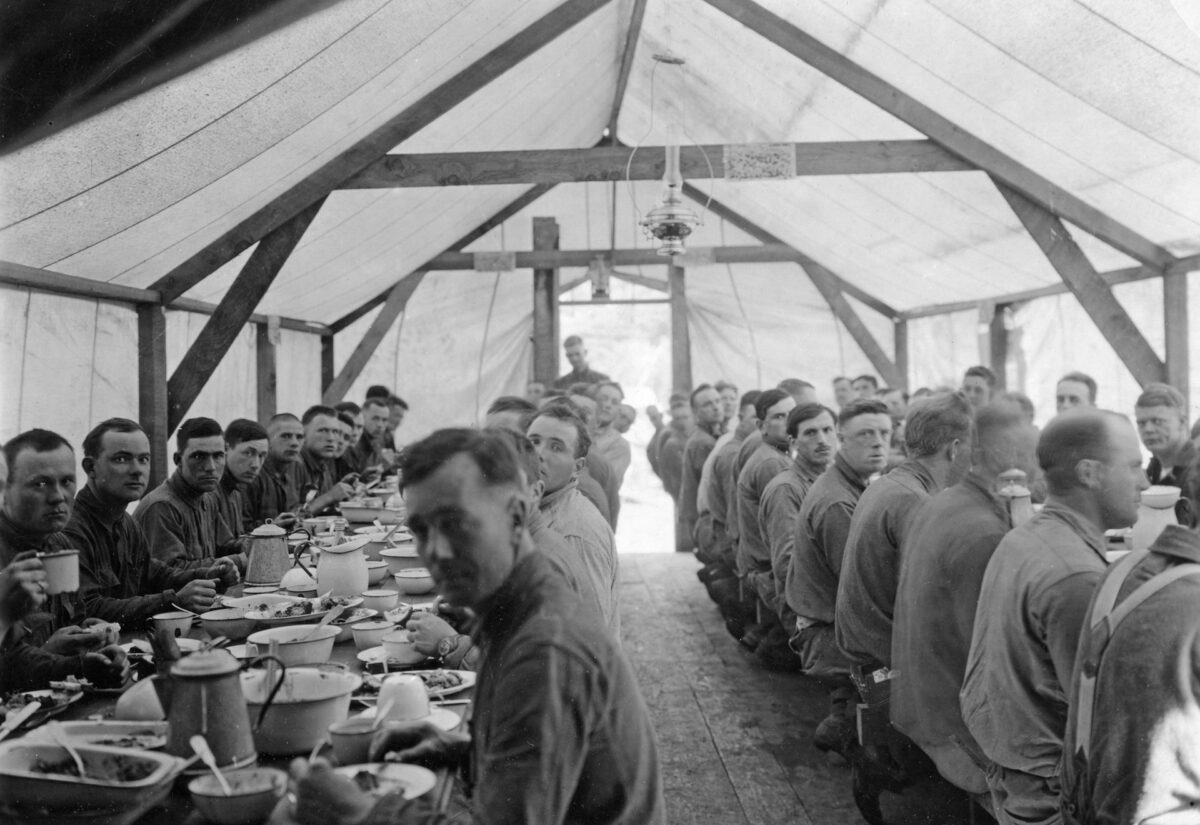 Unspl
UnsplWorld War II brought about global hardship, and nowhere was that more evident than on the home front. In Britain, strict rationing affected nearly every aspect of daily life—from food and clothing to fuel and furniture. But while resources were scarce, people weren’t short on creativity. Faced with limitations, they came up with clever, practical, and often ingenious ways to make do. From inventive cooking to homemade toiletries, and reimagined household routines to cooperative neighbourhood efforts, people found ways to survive—and even thrive—in the face of constant shortages. Here are some of the most resourceful and imaginative ways people adapted to rationing during WWII.
People used carrots as a substitute for sugar in nearly everything.
Sugar was heavily rationed, so people turned to naturally sweet vegetables like carrots to fill the gap. Carrots appeared in cakes, puddings, jams, and even as a replacement for sweets. The Ministry of Food promoted carrots as a health food and even suggested eating them on sticks like lollipops. They were also used in place of icing on cakes and as filler in everything from mince to pie crusts. Carrot fudge became a surprisingly popular treat, and carrot marmalade wasn’t far behind.
Some propaganda even suggested that carrots helped improve night vision—a claim used to explain British pilots’ success and to encourage more carrot consumption. This claim, while exaggerated, helped embed carrots into the national consciousness. According to the Imperial War Museums, carrots were one of the most heavily promoted vegetables of the war.
Old clothes were constantly remade, repurposed, and repaired.
With clothing rationed and new garments hard to come by, people repurposed what they already had. Old dresses were turned into children’s clothes, worn-out trousers became skirts, and curtains were transformed into coats. The “Make Do and Mend” campaign, launched by the British Ministry of Information in 1941, encouraged people to patch, darn, and alter their clothes rather than throw them away. Sewing circles sprang up across the country, and instruction booklets were widely distributed to help families make the most of every scrap of fabric.
Women learned to tailor men’s suits into coats for themselves or convert oversized shirts into blouses. Even wedding dresses were made from parachute silk when possible—borrowed, shared, and passed down from one bride to the next.
People built or repaired furniture using scrap materials.
Because wood and household goods were in short supply, people made furniture out of whatever they could find. Crates became bookshelves, tin baths were used for washing, and packing cases were converted into kitchen cupboards. DIY guides published in magazines offered blueprints for making tables, chairs, and baby cots from salvaged materials.
Many improvised with remarkable ingenuity. Children’s toys, for example, were often handmade from offcuts and scrap metal. One popular design was a doll’s house crafted entirely from matchboxes, scrap fabric, and cardboard. These homemade items weren’t just functional—they were often cherished for the effort that went into them.
Unravelling jumpers to reuse wool became common practice.
Wool was precious, and people learned to make the most of it. Old or damaged jumpers were carefully unravelled, the wool washed and straightened, and then re-knitted into new garments. This process often produced enough yarn to make jumpers, scarves, gloves, or socks. Many women became highly skilled at blending different shades to make stylish patterns from recycled wool.
Knitting for soldiers was also popular—socks, balaclavas, and mittens were sent to the front lines as part of national morale-boosting efforts. Knitting groups were organised in churches, schools, and even pubs, where women shared patterns and tips.
The National Loaf replaced white bread with something more efficient.
White bread became a luxury during the war. In its place, the government introduced the National Loaf—a dense, grey-brown bread made from wholemeal flour. It was higher in fibre and more nutritious, though many disliked the taste and texture. Since it used more of the wheat grain, it helped reduce imports. To make it more palatable, people got creative—grilling it with dripping, turning it into bread pudding, or using it as the base for mock pizza.
Children particularly disliked the texture, but there was little alternative. Even bread bags were recycled—many households kept them for wrapping sandwiches or storing dry goods. Plus, while unpopular, the National Loaf was a step towards healthier eating for many.
Baking without eggs became a widely shared skill.
With fresh eggs hard to come by, cooks relied on substitutes. Vinegar, baking soda, and dried milk powder were common replacements for the binding and leavening properties of eggs. Wartime cookbooks shared recipes for eggless sponge cakes, rock buns, biscuits, and even meringue-like desserts made from potato water.
Mashed potatoes were also used to add moisture to cake mixtures. Some resourceful cooks even managed to make decent scrambled egg substitutes using dried egg powder and a touch of milk and mustard. The creativity of these cooks helped keep morale high during rationing.
Utility furniture became the practical solution to home furnishing.
To manage shortages of raw materials, the government introduced the Utility Furniture Scheme in 1942. This initiative offered a range of standardised designs that used minimal wood and could be mass-produced. Though plain and austere in style, these items were durable and functional. Families could apply for furniture vouchers after suffering bomb damage or marriage, ensuring those in need had access.
Each item carried a small ‘CC41’ stamp (short for “Civilian Clothing 1941”), which also appeared on clothing and other essentials. The V&A Museum features examples of surviving Utility furniture and documents detailing the scheme’s rollout, showing how the designs influenced post-war modernism.
Growing your own food became a national priority.
With imports severely restricted, the government urged people to turn gardens, parks, and even bomb sites into vegetable plots. The “Dig for Victory” campaign was a nationwide movement to promote self-sufficiency. Families grew carrots, potatoes, cabbages, and turnips, while schools and factories cultivated gardens on-site.
According to government records, by 1943 more than 1.4 million allotments had been registered. Urban green spaces were transformed into thriving sources of fresh produce that eased pressure on the national food supply. Some families kept chickens or rabbits for meat and eggs. Even rooftop gardens sprang up in dense urban areas.
People made their own beauty products out of household ingredients.
Soap, shampoo, and cosmetics were often hard to find or too expensive. In response, women turned to creative alternatives. Beetroot juice served as lipstick, soot or burnt cork was used for eyeliner, and talcum powder substituted for dry shampoo. When stockings were unavailable, many painted lines up the backs of their legs with eyebrow pencils or gravy browning to mimic seams.
Homemade cold creams were made from petroleum jelly and olive oil, while hair treatments included rinses with lemon juice or vinegar. Looking presentable was not seen as frivolous—many saw it as a personal act of defiance, a way to uphold normality in a world turned upside down.
Rationing encouraged communities to support each other more than ever.
With so much in short supply, resource-sharing became a lifeline. Neighbours swapped ration coupons, pooled meals, and bartered clothes or extra garden vegetables. In some areas, communal kitchens were set up to ensure no one went hungry. Families shared bathwater to conserve hot water and fuel, and children were often handed down clothes from older siblings or cousins.
Some towns organised clothing drives and toy swaps before Christmas, ensuring that children didn’t miss out on festive cheer. There was a deep sense of camaraderie, and many friendships forged during those years endured long after the war ended.
World War II forced people to adapt quickly, and the innovations that came from that time weren’t just clever—they were essential for survival.
In an age of scarcity, resourcefulness became a way of life, and many of the habits formed during the war years would shape generations to come. These creative solutions remind us that even in the hardest times, human ingenuity doesn’t just survive—it thrives. For more about everyday life in wartime Britain, the Imperial War Museums hold a vast archive of photographs, posters, oral histories, and personal diaries that offer a deeper look at how people lived, coped, and helped one another through one of the most challenging periods in modern history.



